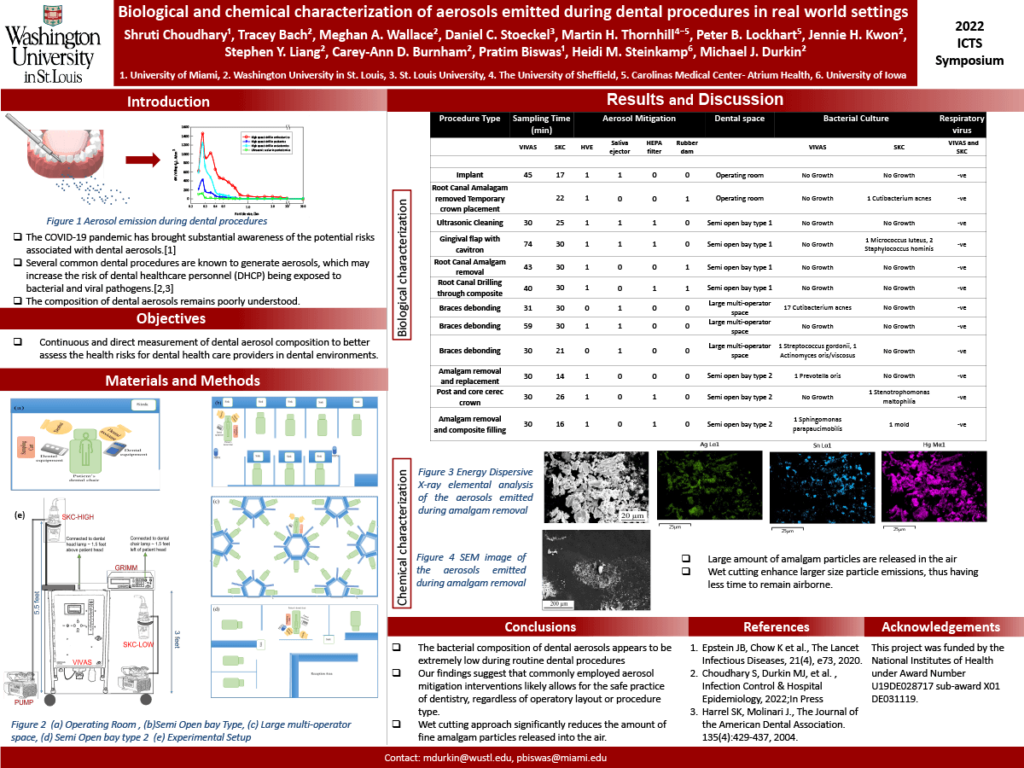Introduction: The composition of real world dental aerosols remained poorly understood. Previous studies have used in vitro experimental designs and/or indirect measures to evaluate bacteria and viruses from dental splatter. However, these findings may overestimate the occupational health risks for dental healthcare personnel (DHCP). The purpose if this study is to directly measure dental aerosol composition to better assess the health risks for DHCPs.
Methods: We used a variety of aerosol instruments to capture and measure the bacterial, viral, and inorganic composition of aerosols during a variety of common dental procedures and in a variety of dental clinic layouts. Equipment was placed in close approximation of dentists and during each procedure to best capture the health risk hazards from the perspective of the DHCP. Devices used to capture aerosols were set at physiologic respiration rates. Aerosol mitigation was per the discretion of the dentist.
Results: We detected very few bacteria and no viruses in dental aerosols – regardless of clinic layout. The bacteria identified were most consistent with either environment or standard oral flora, suggesting a low risk of transmission of viable pathogens from patients to DHCPs. Our team captured elements consistent with amalgam fillings in aerosols, when analyzing revisions of restorations.
Impact: Aerosols generated from dental procedures are generally a low risk occupational health risk for bacterial and viral pathogens when common dental aerosol mitigation interventions were employed. DHCPs who use standard aerosol migration interventions should not worry about the risk of bacterial or viral pathogens.
Organization – Washington University in St. Louis
Durkin MJ, Choudhary S, Wallace M, Stoeckel DC, Thornhill MH, Lockhart PB, Kwon JH, Liang SY, Burnham CA, Biswas P, Steinkamp HM
